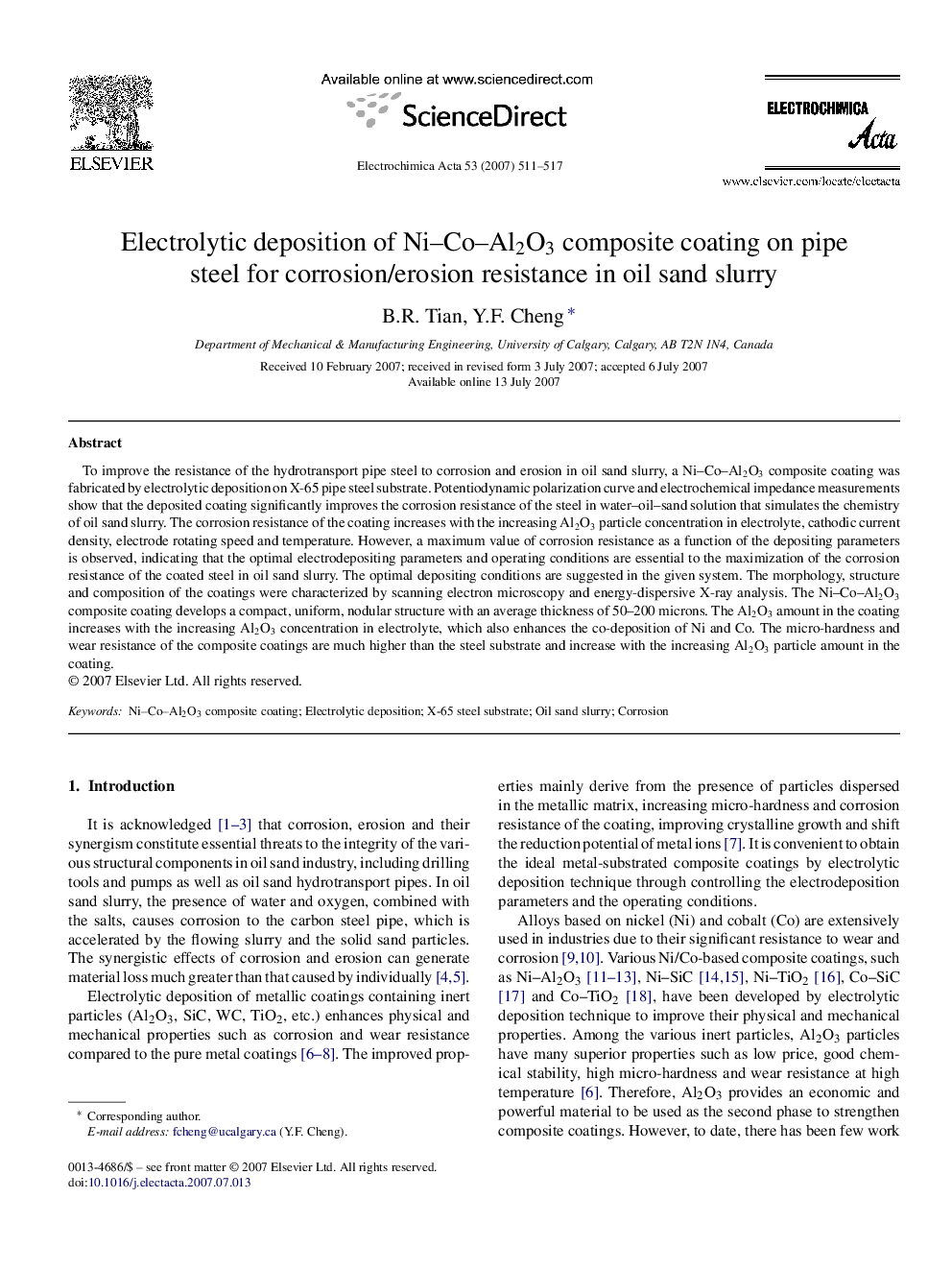| Article ID | Journal | Published Year | Pages | File Type |
|---|---|---|---|---|
| 195347 | Electrochimica Acta | 2007 | 7 Pages |
To improve the resistance of the hydrotransport pipe steel to corrosion and erosion in oil sand slurry, a Ni–Co–Al2O3 composite coating was fabricated by electrolytic deposition on X-65 pipe steel substrate. Potentiodynamic polarization curve and electrochemical impedance measurements show that the deposited coating significantly improves the corrosion resistance of the steel in water–oil–sand solution that simulates the chemistry of oil sand slurry. The corrosion resistance of the coating increases with the increasing Al2O3 particle concentration in electrolyte, cathodic current density, electrode rotating speed and temperature. However, a maximum value of corrosion resistance as a function of the depositing parameters is observed, indicating that the optimal electrodepositing parameters and operating conditions are essential to the maximization of the corrosion resistance of the coated steel in oil sand slurry. The optimal depositing conditions are suggested in the given system. The morphology, structure and composition of the coatings were characterized by scanning electron microscopy and energy-dispersive X-ray analysis. The Ni–Co–Al2O3 composite coating develops a compact, uniform, nodular structure with an average thickness of 50–200 microns. The Al2O3 amount in the coating increases with the increasing Al2O3 concentration in electrolyte, which also enhances the co-deposition of Ni and Co. The micro-hardness and wear resistance of the composite coatings are much higher than the steel substrate and increase with the increasing Al2O3 particle amount in the coating.
